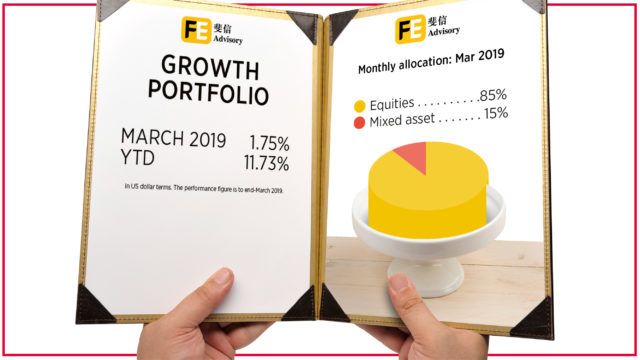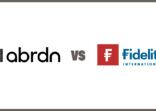Each month we feature the allocation in one of the three portfolios offered by FE Advisory Asia: Cautious, Balanced and Growth. Data is included to show how well the portfolio has done compared to the previous month and year-to-date so that readers can get a sense of performance.
Additionally, Luke Ng, senior VP of research at FE Advisory Asia, provides a concise analysis on macro events and their impact on the portfolio.
A breakdown of the growth portfolio at the end of March 2019*. Performance figures are in the menu image above.


Luke Ng, FE Advisory Asia
How did the market perform in March?
March was another strong month for investors, as all equity markets continued to bounce back following the rout at the end of 2018. Markets were primarily driven by monetary policy from both the US and Europe. The Fed continued its increasingly dovish stance. Following indicators showing slower economic growth, the Fed announced that they were no longer expecting any more interest rate rises in 2019 and only a single one in 2020. The news caused treasury yields to invert, a situation where short-term bonds offer higher yields than long term bonds. Historically this has been an indicator that a recession is only a year or two away.
Earlier in the month the European Central Bank had similarly announced that rates would remain on hold until at least next year, following a downgrade in their growth and inflation forecasts. The moves by the Fed and the ECB are essentially a reaction to poor economic news. Markets reacted positively, however, as a lower rate environment is seen as more accommodating.
In face of the slowdown in growth, the Chinese authorities also indicated that more stimulus measures were ready to roll out. That promptly restored market confidence after the government’s decision to lower its official growth target in 2019.
Chinese equities ended the month with better performance than peers in the US and Europe, despite developed markets generally outperforming the emerging world in March.
How did the Growth portfolio perform?
The FE growth portfolio rose 1.75% in March in US dollar terms. It did better than both developed market and emerging market equities. With bias towards companies with secular growth prospects, our holding in JPMorgan Japan (Yen) continued its good run so far this year and outperformed Japanese equities by a considerable margin in the month.
We also gained access to emerging market equity exposure via JP Morgan, and the strategy benefited from the overweight exposure in China and India (resulting primarily from bottom-up calls) and outperformed peers and its benchmark, the MSCI Emerging Market Index. Overall, our portfolio benefited from our Asia-focused positioning, as well as the strategies selected to invest into Japanese and the US equities. However, our investment in European equities fell marginally in March and under-performed its respective market.
FE Advisory Asia portfolio performance
| Jan 2019 | Feb 2019 | Mar 2019 | Apr 2019 | May 2019 | June 2019 | YTD | |
| Cautious | 3.25% | 1.19% | 1.00% | 5.54% | |||
| Balanced | 5.51% | 1.42% | 1.30% | 8.42% | |||
| Growth | 7.36% | 2.27% | 1.75% | 11.73% |
Source: FE Advisory Asia. Growth rates in US dollar terms. Data as of 31 March 2019.
Full year 2018 performance for the FE Advisory portfolios can be viewed here.

















